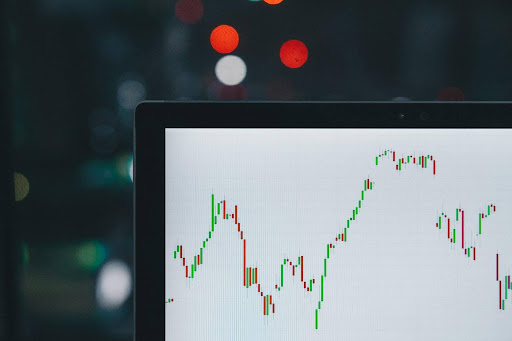Economic policies in developed and developing countries differ significantly due to their distinct economic structures, development levels, and socio-economic challenges. Developed countries focus on maintaining stability and fostering innovation while developing countries prioritize structural reforms, infrastructure development, and social policies to address unique challenges and promote sustainable growth.
Economic Growth Comparison
Developed countries experience stable economic growth supported by well-established institutions and infrastructure, with policies focused on maintaining price stability, high employment, and sustainable growth. In contrast, developing countries often have rapid growth potential but face structural challenges like underdeveloped industrial bases and higher poverty levels. Their policies focus on liberalizing trade, improving fiscal management, and promoting private sector development to achieve stable growth.
Macroeconomic Policy Differences
Developed countries employ advanced monetary policy tools, like adjusting interest rates, to manage inflation and stabilize their economies. Fiscal policies support economic stability and growth by managing public debt, taxation, and government spending. In contrast, developing countries face limitations in monetary policy effectiveness due to less developed financial markets. Their fiscal policies focus on:
- Improving tax systems
- Reducing budget deficits
- Increasing efficiency in public spending to create fiscal space for development initiatives
Structural Policy Focus
Developed countries prioritize maintaining and upgrading well-developed infrastructure and investing heavily in research, development, technology, and innovation to drive productivity and economic growth. In contrast, developing countries focus on:
- Building and improving infrastructure like transportation, energy, and communication networks to support economic activities
- Implementing structural reforms to create a market-based environment with an outward orientation
- Liberalizing trade, improving financial systems, and promoting competition to foster development
Social and Governance Policies
Developed countries have comprehensive social policies covering healthcare, education, and social security to reduce inequality and support high living standards. They also maintain strong institutions, transparent governance, rule of law, and efficient public administration. In contrast, developing countries focus on:
- Poverty reduction, improving healthcare and education access, and promoting inclusive development through social policies crucial for sustainable economic growth
- Addressing governance challenges like political instability, corruption, and weak institutions to support economic development
Role of International Aid and Development Assistance
International aid and development assistance plays a crucial role in supporting the economic growth and development of developing countries. Official development assistance (ODA) from developed countries and international organizations helps developing nations address challenges and promote sustainable development. ODA is implemented by local actors like ministries, NGOs, and businesses with the aim of helping local populations. Aid can be bilateral, directly from donor to recipient country, or multilateral through international organizations. When the efforts of NGOs and international organizations align, communities benefit from improved efficacy and coordination of aid.
However, the success of aid depends on factors like the recipient country’s governance and economic policies. Aid given to well-governed countries with market-oriented policies may boost development, while aid to poorly governed countries with restrictive policies is less likely to contribute positively. Apart from being aid recipients, some developing countries like Montenegro are also becoming donor countries, which has implications for their international relations. Development aid aims to help developing countries meet the Sustainable Development Goals and achieve sustained improvements in economic and social conditions.
Financial Market Development and Access to Capital
Financial market development and access to capital are critical factors that distinguish the economic policies of developed and developing countries. In developed economies, robust and mature financial markets facilitate efficient capital allocation, risk management, and liquidity provision. These markets offer diverse financial instruments, including stocks, bonds, and derivatives, enabling businesses to raise capital and investors to diversify their portfolios. Additionally, developed countries have well-regulated banking systems and capital markets that support economic stability and growth by providing access to credit, monitoring how different credit score ranges influence financial decisions, and the financial services for individuals and enterprises.
Conversely, developing countries often struggle with underdeveloped financial markets and limited access to capital. These nations face challenges such as low financial literacy, limited banking infrastructure, and regulatory barriers that hinder the growth of their financial sectors. Consequently, businesses in developing countries frequently encounter difficulties in securing financing, which impedes their ability to expand and innovate. To address these issues, developing countries focus on financial inclusion initiatives, such as promoting microfinance, enhancing mobile banking, and implementing regulatory reforms to strengthen their financial systems. By improving access to capital, developing countries can foster entrepreneurship, stimulate economic growth, and reduce poverty.
International financial institutions, such as the World Bank and the International Monetary Fund, play a vital role in supporting the financial market development of developing countries. These institutions provide technical assistance, policy advice, and financial resources to help countries implement reforms and build resilient financial systems. Effective financial market development can bridge the gap between developed and developing economies, enabling developing countries to achieve sustainable economic growth and integration into the global financial system.
Environmental Sustainability and Climate Change Policies
Environmental sustainability and climate change policies are increasingly critical components of economic policy frameworks in both developed and developing countries. Developed countries, with their advanced technological capabilities and financial resources, have the means to implement comprehensive environmental regulations and invest in green technologies. These nations prioritize reducing carbon emissions, promoting renewable energy sources, and enhancing energy efficiency to mitigate the impacts of climate change. Policies such as carbon pricing, subsidies for clean energy, and stringent environmental standards are common in developed countries, reflecting their commitment to sustainability and environmental stewardship.
In contrast, developing countries face unique challenges in balancing economic growth with environmental sustainability. Rapid industrialization, urbanization, and population growth in these nations often lead to environmental degradation, resource depletion, and increased greenhouse gas emissions. Developing countries may lack the financial resources and technological infrastructure to adopt advanced environmental policies and practices. Consequently, their economic policies must address the dual objectives of promoting development while safeguarding the environment.
To achieve this balance, developing countries focus on integrating sustainable development goals into their economic policies. Initiatives such as reforestation, sustainable agriculture, and investment in renewable energy projects are vital components of their strategies. Additionally, international cooperation and financial support from developed countries are crucial in helping developing nations implement climate change mitigation and adaptation measures. Programs like the Green Climate Fund provide resources to support low-emission and climate-resilient development pathways in developing countries.
Both developed and developing countries recognize the importance of global cooperation in addressing climate change. International agreements, such as the Paris Agreement, facilitate collaborative efforts to limit global warming and promote sustainable development worldwide. By adhering to these agreements, countries can work together to reduce greenhouse gas emissions, enhance climate resilience, and achieve a more sustainable and equitable global economy.
Conclusion: Impact of Global Trade Policies
Global trade policies significantly impact the world economy by shaping the flow of goods, services, and investments across borders. International trade stimulates economic growth, fosters technological progress, promotes competition, and creates jobs. However, it can also exacerbate income inequality and lead to job displacement in certain sectors.
Trade policies play a crucial role in determining the extent to which countries can harness the benefits of international trade while managing its potential downsides. Tariff reductions and preferential trade agreements have been found to explain a significant portion of trade growth, although other factors, like technological advances, also play a role. In today’s complex trade landscape, characterized by changing geopolitical dynamics and rapid technological transformations, trade policies need to adapt to build a more inclusive, sustainable, and resilient global trade system.



